Continuous versus intermittent infusions of antibiotics for the treatment of infectious diseases

Therefore, the present meta-analysis aimed to investigate the effectiveness of antibiotic administration in patients with infection and to assess whether the effect differs between the two antibiotic administration types” Chen et al (2019). Abstract: BACKGROUND: Severe sepsis and pneumonia are common problems in the intensive care units (ICUs) and cause high morbidity and mortality. Optimal […]
CLABSI reduction following chlorhexidine bathing in a hematology-oncology unit

The aim was to reduce the incidence of central line-associated bloodstream infections in a hematology-oncology unit through the staff’s continued adherence to the institution’s protocol for CHG baths with wipes, and to identify barriers and the degree to which they interfered with optimal use of the CHG wipes” Jusino-Leon et al (2019). Abstract: BACKGROUND: Chlorhexidine […]
Mechanical ventilation increases pneumothorax risk during subclavian vein puncture

In this study landmark-guided infraclavicular SCV catheterization was associated with a significantly higher rate of pneumothorax when venipuncture was performed during mechanical ventilation and not in apnea” Palmaers et al (2019). Abstract BACKGROUND: Infraclavicular subclavian vein (SCV) catheterization is a standard procedure in anesthesia and intensive care. There is a lack of evidence on how […]
Detection of intravenous infiltration using impedance parameters
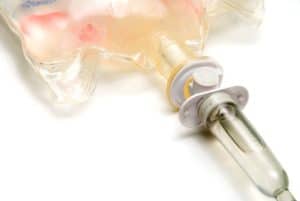
Our findings suggest that bioelectrical impedance is an effective method for detection of infiltration in a noninvasive and quantitative manner” Jeong et al (2019). Abstract: This study was aimed to evaluate the changes of impedance parameters of patients who were admitted to a long-term care hospital by measuring bioelectrical impedance. The subjects were 18 patients […]
How to to minimize air bubbles during an infusion?

An antisiphon valve, placed at the end of the IV tubing to pressurize the infusion and to minimize air bubbles, was found to decrease clinically insignificant AIL alarms” Meade et al (2019). Abstract: The administration of 24-hour continuous chemotherapy infusions is common in certain regimens, such as EPOCH (etoposide, prednisone, vincristine, cyclophosphamide, and doxorubicin). Such […]
Potential complications of rapid infusion catheters

Rapid infusion catheters (RICs) allow expedient conversion of peripheral intravenous (PIV) catheters to peripheral sheaths; however, little is known about potential complications” Chou et al (2019). Abstract: Rapid infusion catheters (RICs) allow expedient conversion of peripheral intravenous (PIV) catheters to peripheral sheaths; however, little is known about potential complications. In this case, a 64-year-old male […]
Selecting the proper IV antibiotic dose for treating intervertebral disc infection

Simulation of antibiotics transport into human intervertebral disc with intravenous infusion” Zhu et al (2019). Abstract: STUDY DESIGN: Simulation of antibiotics transport into human intervertebral disc with intravenous infusion. OBJECTIVE: The objective of this study was to quantitatively investigate antibiotic concentrations in the disc. SUMMARY OF BACKGROUND DATA: Intravenous infusion of antibiotics is typically used […]
Effects of various infusion volumes on liver-related metabolic mechanism

To investigate the curative effects of various infusion volumes on liver-related metabolic mechanism in the treatment of hemorrhagic shock” Li et al (2018). Abstract: OBJECTIVES: To investigate the curative effects of various infusion volumes on liver-related metabolic mechanism in the treatment of hemorrhagic shock. METHODS: A severe hemorrhagic shock rabbit model was established in 30 […]
Use of infrared thermography in the detection of infusion phlebitis

The goal of this study was to investigate the feasibility of infrared (IR) thermography to objectively detect phlebitis in adult ICU patients” Doesburg et al (2019). Abstract: Common methods to detect phlebitis may not be sufficient for patients in the intensive care unit (ICU). The goal of this study was to investigate the feasibility of […]
Pediatric prehospital intraosseous access during combat operations

We sought to characterize the use of IO access in pediatric patients who sustained trauma in the combat setting” Schauer et al 92019). Abstract: BACKGROUND: Vascular access in critically ill pediatric patients can be challenging with delays potentially leading to worse outcomes. Intraosseous (IO) access has a low rate of complications and can be utilized […]
Economic impact of OPAT versus oral antibiotic therapy

Our objective was to compare economic burden between OPAT and oral therapy, accounting for direct and indirect costs and caregiver quality of life (QoL)” Krah et al (2019). Abstract: BACKGROUND: There is increasing evidence that outpatient parenteral antimicrobial therapy (OPAT) is overused for children and that outcomes with oral therapy are equivalent. Our objective was […]
Safety and effectiveness of hypodermoclysis for rehydrating children

The objective of this review is to summarize the published evidence regarding the effectiveness and safety of hypodermoclysis in comparison to intravenous fluid infusion for the rehydration of children with mild or moderate dehydration in hospital and home settings” Saganski and de Souza Freire (2019). Abstract: The objective of this review is to summarize the […]
Development of an automatic needle destroyer to prevent needlestick injuries

An automatic needle destroyer (ANDY) was developed to prevent needlestick injuries, and usability tests were conducted in several hospitals” Kim et al (2019). Abstract: OBJECTIVES: An automatic needle destroyer (ANDY) was developed to prevent needlestick injuries, and usability tests were conducted in several hospitals. The addition of extra features to the ANDY is in progress, […]
Catheter fracture in power-injectable Groshong silicone totally implantable port
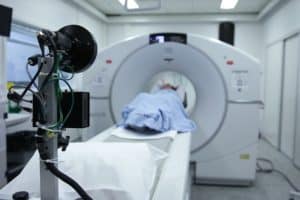
Totally implantable venous access devices with Groshong silicone catheters, if inserted via the internal jugular vein, have a potential risk for late catheter fracture” Saijo et al (2019). Abstract: BACKGROUND: Totally implantable venous access devices are valuable tools for total parenteral nutrition, chemotherapy, and long-term intravenous therapy. However, late catheter fracture is a well-known complication […]
Peripheral intravenous catheter clinical decision-making aid

This study aimed to develop a decision aid to assist with clinical decision making to promote clinically indicated peripheral intravenous catheter (CIPIVC) insertion in the emergency department (ED) setting” Carr et al (2019). Abstract: BACKGROUND: It is well established that the idle peripheral intravenous catheter (PIVC) provides no therapeutic value and is a clinical, economic […]
Multidisciplinary team developed blood-borne pathogen exposure prevention bundle

Blood-borne pathogen exposure (BBPE) represents a significant safety and resource burden, with more than 380,000 events reported annually across hospitals in the United States” Gurria et al (2019). Abstract: BACKGROUND: Blood-borne pathogen exposure (BBPE) represents a significant safety and resource burden, with more than 380,000 events reported annually across hospitals in the United States. The […]
Dermacoccus nishinomiyaensis as a cause of persistent pediatric CRBSI

This case of persistent infection subsequently resolved in response to vancomycin and urokinase lock therapy that helped to maintain the catheter” Joron et al (2019). Abstract: The authors herein report a persistent Dermacoccus nishinomiyaensis catheter- related bacteremia in a 1-year-old boy with severe Hirschsprung’s disease. D. nishinomiyaensis isolates were identified by Matrix-Assisted Laser Desorption-Ionization Time-of-Light […]
Proof of concept for a strategy to reduce CLABSI rates in pediatric patients

The results of this study offer a proof of concept for a strategy to reduce CLABSI rates in pediatric patients who reside in remote and low-resource environments and are undergoing HPN” Fuchs et al 92019). Abstract: BACKGROUND: Central line-associated bloodstream infections (CLABSIs) are major sources of morbidity, death, and healthcare costs in patients who receive […]
Vascular access in children requiring maintenance haemodialysis

Here we present clinical practice recommendations for AVFs and CVLs in children with ESKD” Shroff et al (2019). Abstract: BACKGROUND: There are three principle forms of vascular access available for the treatment of children with end stage kidney disease (ESKD) by haemodialysis: tunnelled catheters placed in a central vein (central venous lines, CVLs), arteriovenous fistulas […]
Stability of mycophenolate mofetil in polypropylene 5% dextrose infusion bags

We studied the stability of 1-10 mg/mL Mycophenolate Mofetil (MMF) in polypropylene (PP) 5% dextrose infusion bags prepared from Cellcept® and a generic brand name (Micofenolato de Mofetilo Accord) at different storage temperatures. To ensure chemical compatibility during preparation, we also tested MMF sorption to the EQUASHIELD® closed-system drug transfer device (CSTD) used in this […]
Iatrogenic acquired peripheral AVF following venous catheterisation in a cat

This report describes a case of iatrogenic acquired peripheral AVF following venous catheterisation in a cat” Graziano et al (2019). Abstract: CASE SUMMARY: A 10-year-old male neutered domestic shorthair cat was presented with a 4 month history of slow, progressive swelling and intermittent multifocal bleeding of the distal right forepaw that progressively developed after cephalic […]
Parenteral versus oral iron for treatment of iron deficiency anaemia
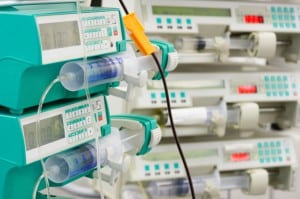
The burden of iron deficiency anaemia during pregnancy and post-partum continues to remain high especially in India. Challenges to treatment include gastrointestinal side effects and non compliance to oral iron therapy. Newer parenteral formulations need to be explored as alternatives” Radhika et al (2019). Abstract: INTRODUCTION: The burden of iron deficiency anaemia during pregnancy and […]
Septic pulmonary embolism an undetected complication of CRBSI
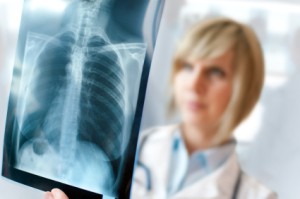
Septic pulmonary embolism (SPE) may be a frequently undetected complication of central venous catheter (CVC)-related bloodstream infections (CRBSIs)” Santarpia et al (2019). Abstract: BACKGROUND: Septic pulmonary embolism (SPE) may be a frequently undetected complication of central venous catheter (CVC)-related bloodstream infections (CRBSIs). MATERIALS AND METHODS: The incidence of SPE was evaluated in a cohort of […]
Cannula-related venous thrombosis after venovenous extracorporeal membrane oxygenation

The incidence of cannula-related venous thrombosis after venovenous extracorporeal membrane oxygenation is high” Fisser et al (2019). Abstract: Objectives: Venovenous extracorporeal membrane oxygenation is indicated in patients with severe refractory acute respiratory failure. Venous thrombosis due to indwelling catheters is a frequent complication. The aim of this study was to analyze the incidence of cannula-related […]
Propofol infusion syndrome literature review

Clinicians should consider propofol infusion syndrome in cases of unexplained metabolic acidosis, ECG changes, and rhabdomyolysis” Hemphill et al (2019). Abstract: Propofol infusion syndrome is a rare, potentially fatal condition first described in children in the 1990s and later reported in adults. We provide a narrative review of what is currently known about propofol infusion […]
Complication rates in patients receiving continuous renal replacement therapy

To analyze the practice pattern of vascular access use and complication rates in patients receiving continuous renal replacement therapy from a large Chinese urban medical center” Ten et al (2019). Abstract: OBJECTIVE: To analyze the practice pattern of vascular access use and complication rates in patients receiving continuous renal replacement therapy from a large Chinese […]
Pharmacokinetics of continuous-infusion ceftazidime in febrile neutropenic children
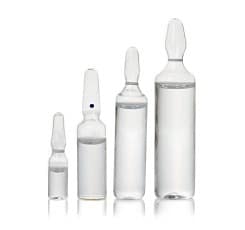
To conduct a population pharmacokinetic analysis of continuous-infusion ceftazidime in a retrospective cohort of paediatric HSCT patients” Cojutti et al (2019). Abstract: OBJECTIVES: To conduct a population pharmacokinetic analysis of continuous-infusion ceftazidime in a retrospective cohort of paediatric HSCT patients who were empirically treated for febrile neutropenia (FN) and who underwent therapeutic drug monitoring of […]
Complications of totally implantable central venous port system insertion

The aim of the present study was to describe the procedure of totally implantable central venous port system (TICVPS) insertion performed at our center and investigate associated complications” Kim et al (2019). Abstract: The aim of the present study was to describe the procedure of totally implantable central venous port system (TICVPS) insertion performed at […]
Surveillance system for decreasing neonatal nosocomial infections

Surveillance systems are useful to reduce nosocomial infection in VLBW infants. Reduction in antibiotic and CVC use requires longer intervention time” Estañ-Capell et al (2019). Abstract: BACKGROUND: Nosocomial infection in very low birthweight (VLBW) infants is a common complication with high morbimortality. New strategies to reduce its occurrence have recently led to the development of […]
Effect of prehospital blood draws on length of stay for chest pain patients

This article provides research of cardiac biomarkers being drawn in the prehospital setting compared with the emergency department (ED) on intervals critical to the diagnosis of acute myocardial infarction” DuCharme et al (2019). Abstract: This article provides research of cardiac biomarkers being drawn in the prehospital setting compared with the emergency department (ED) on intervals […]

